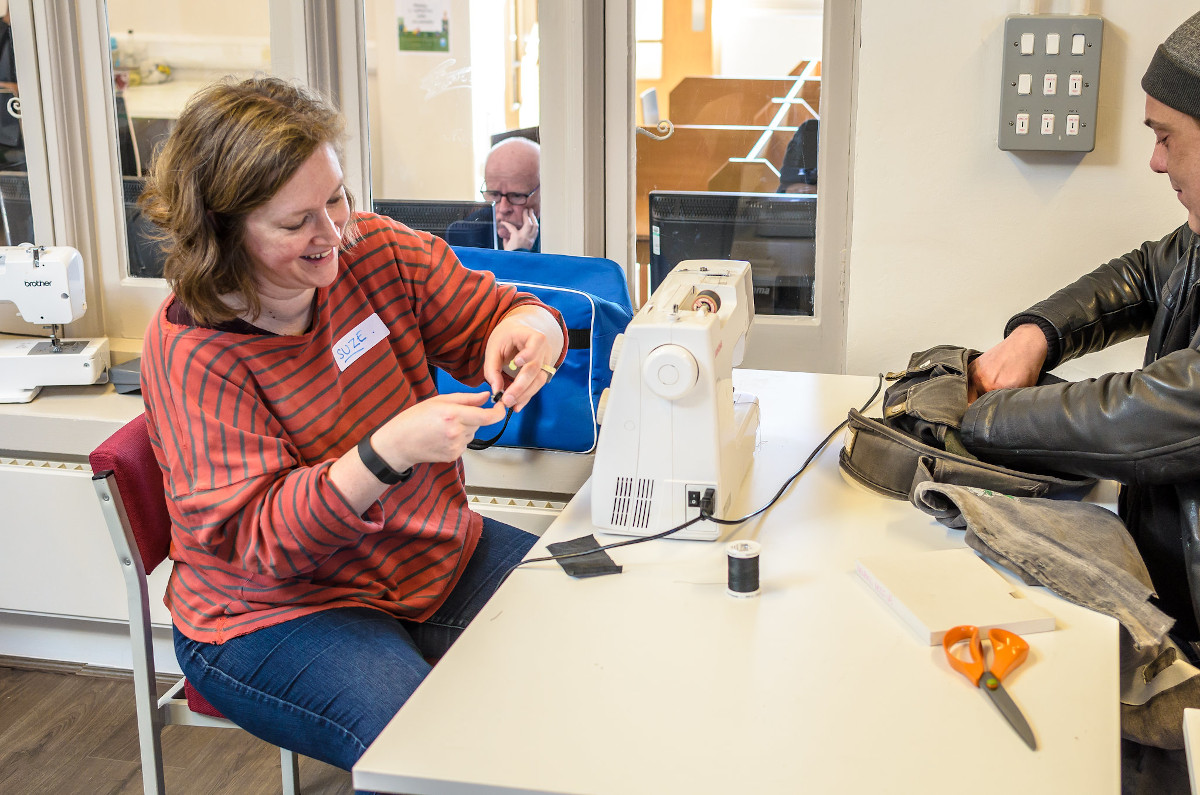
The libraries of things bringing cities into bloom
18 of December of 2024
A drill that was used for a house move, a sewing machine that only fires up when something rips, and a tent that hasn’t been camping for years. According to the Ellen McArthur Foundation, 80% of the utensils we have at home are used just once a month. And some we only use once every few years.
For years, cities including Berlin, New York, Brussels and Barcelona have had libraries of things stocked full of items we only use once in a blue moon. The aim? Promoting reuse and the circular economy. The unintended benefit? The spaces have become centers of social cohesion and city transformation.
Libraries of things host recycling workshops and courses on how to use tools, and have even become venues for neighborhood meetings and ideas labs. Every year in Buffalo (United States) residents borrow rakes, shovels and gloves from the library of things to plant trees and plants, improving the city’s green spaces.
A new generation of libraries
Why can you borrow a book, but not a sewing machine? This simple seed of an idea led to the opening in 2010 of Leila Berlin , considered Europe’s first library of things. It opened its doors on the German capital’s Kastanienallee Street and is still flourishing today, 14 years later.
The initiative follows in the footsteps of professional tool libraries, common in the United States and the United Kingdom (the first one opened in Michigan, United States, in 1943). But this is a philosophy that goes beyond the simple loan of tools. It’s about reducing the pressure of our consumption on the planet.

Man holding a sewing machine in a library of things. Hackney Council (Flickr)
You can find everything in this new generation of libraries; from ice cream makers to paint brushes and rollers, with some skis, drills and suitcases thrown in for good measure. As well as cost and resource savings, the libraries aim to raise the population’s awareness of the need to swap our linear culture of consumption for one based on the circular economy.
“When you borrow something, you can save money and space at home, develop new skills with tools you don’t have the resources to invest in, feel part of a community, and play your part in the circular economy by promoting a culture based on sharing. And because you aren’t buying the kind of items you’d rarely use, you’re also contributing to reducing the extraction of materials and landfill waste”, explains a representative from the Nicosia Library of Things in Cyprus.

Repair Manifesto poster, photo taken during an event. Cristal Palace Library (Flickr).
These initiatives can have a major impact on cities. As the Ellen McArthur Foundation explains, cities account for 75% of natural resource consumption, and also produce 50% of global waste and 60-80% of greenhouse gas emissions.
“Implementing the circular economy in cities can bring tremendous economic, social, and environmental benefits” explains the foundation. It can create “livable cities with improved air quality, reduced pollution, and enhanced social interactions. Resilient cities, reducing reliance on raw materials by keeping products in use and balancing local production with global supply chains.”
The circular economy in figures
In 12 months, between 2022 and 2023, the Library of Things network in the United Kingdom loaned a total of 10,065 objects to 6982 people. Avoiding the production and purchase of new objects saves some 124 metric tons of carbon dioxide (CO2) from being released into the atmosphere. And encouraging owners not to chuck their items in the trash prevented 64 metric tons of waste from ending up in landfills. According to The Library of Things calculations, these actions also have an impact on people’s wallets: users saved a total of 326,000 GBP.
They estimate that to date, the network of libraries has rented almost 20,000 objects to around 11,400 people, saving more than 640,000 GBP. Elsewhere, the impact is also cultural: in Tournevie, a library of things in Brussels, they put on workshops training people how to use all types of tools, how to work with materials like wood, or fix electronic devices, for example.

Two people use a sewing machine in a library of things in the United Kingdom. Crystal Palace Library of Things (Flickr)
In the United States, the direct impact libraries of things have on cities can be seen in the figures. A Buffalo initiative supported logistically by the town’s tool library has helped plant more than 1600 trees in various parks and streets since 2014.
Ver esta publicación en Instagram
Some libraries have also shaped new, fascinating experiments. The Plant Library by the Serge Hill Project is one such example. This research project was launched in 2021 to investigate the power of gardening in terms of improving people’s health and wellbeing and promoting inclusion in communities. Based in Bedmond (United Kingdom), it welcomes anyone interested in botany and gardening to its orchard site with open arms.
The library of plants takes up a significant proportion of the land, boasting more than 1500 varieties and serving as an interactive catalog that can be visited and studied from all angles. “It’s an exciting ongoing experiment”, say the creators of the living library.





There are no comments yet